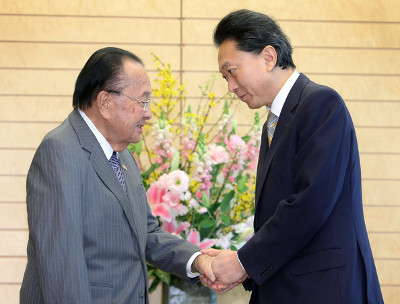Congressional staff members said the problems in building new facilities for the Marines in Guam loomed even larger than the politics in Japan in their decision to cut funding.
The Senate appropriations committee said they remained concerned about Guam’s inadequate water, electrical, road and sewer infrastructure — and said inadequate planning had gone in to preparing for the nonmilitary aspects of the move.
The House Appropriation Committee report echoed the Senate findings about Guam, and said it had made the cuts because of the Defense Department’s ‘inability to address numerous concerns about the sustainability of the buildup as currently planned.’
These budget cuts come more than two years after the US government’s Government Accountability Office (GAO) criticised the Defense Department the the US military for dragging its feet on the Guam end of the realignment plan and suggested that it was unlikely that the 2014 target would be met — and not because of Japanese politics. In late 2008 Admiral Timothy Keating, then the commander of US Pacific Command, acknowledged that the plan would most likely not be executed on schedule, citing budgetary concerns.
Corey Wallace is right to point to Washington’s hypocrisy — for all of Washington’s hand-wringing about political instability in Japan, the reality of the 2006 agreement was that the domestic political conditions concerning the agreement in both countries were at best complicated, and at worse impassable. For the realignment to go forward on schedule, the US government would have to secure the support of the people of Guam and Congress would have to budget a tremendous amount of money to improve the island’s infrastructure, while Tokyo secured the support of communities in Okinawa and budget for the Futenma replacement facility and the construction underway on Guam.
In the rush to get something committed to paper, the Bush administration and the LDP have left the alliance with a festering sore, an agreement that looks all but unimplementable, has eroded trust between Washington and Tokyo, and mortally wounded the DPJ in its ten months in office. Considering these costs, it is remarkable that the Obama administration has clung so tenaciously to this Bush administration legacy. Is there anything in American foreign policy making to rival the much-vaunted bipartisan consensus on Japan?
This article was originally posted on Observing Japan here.

